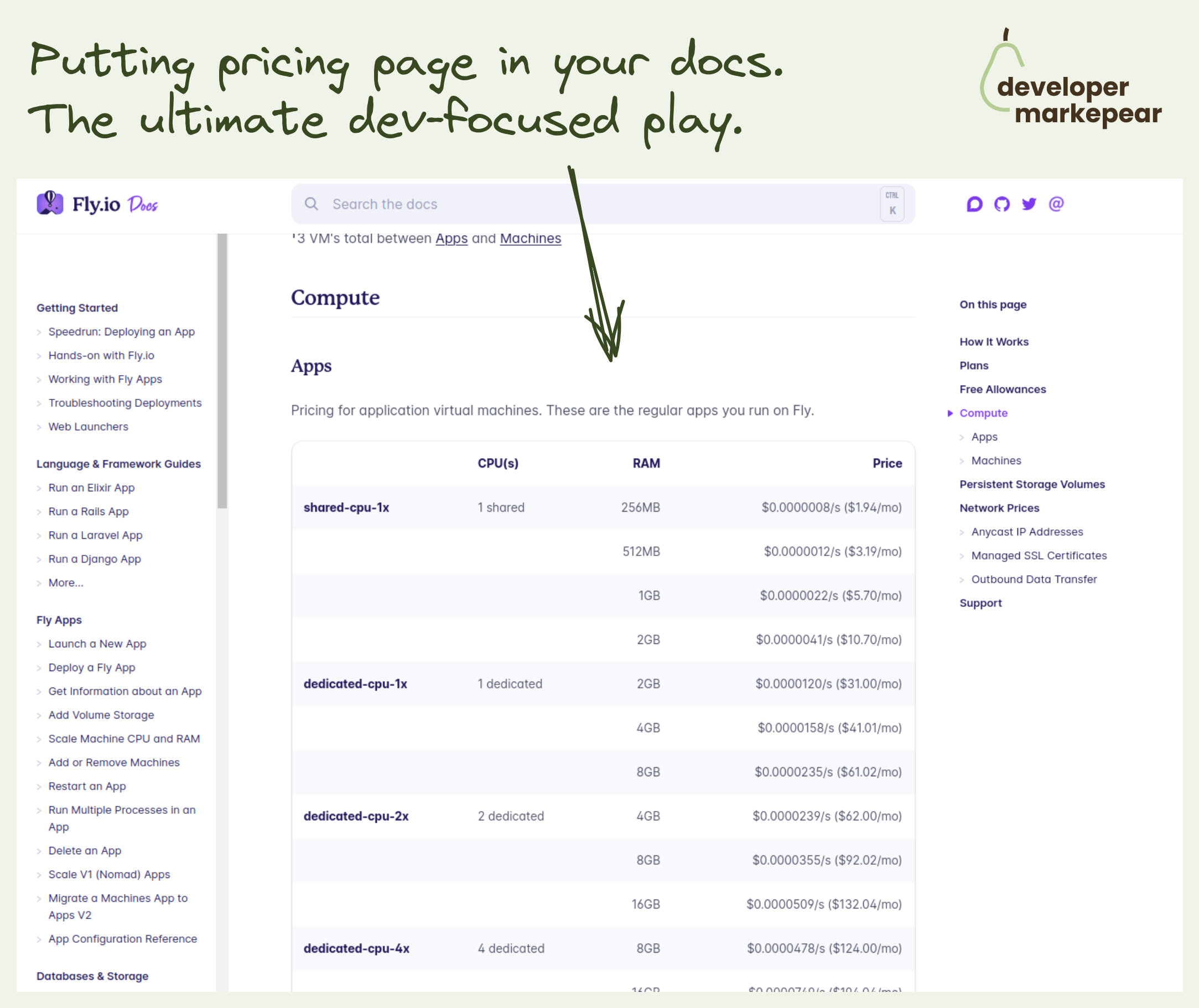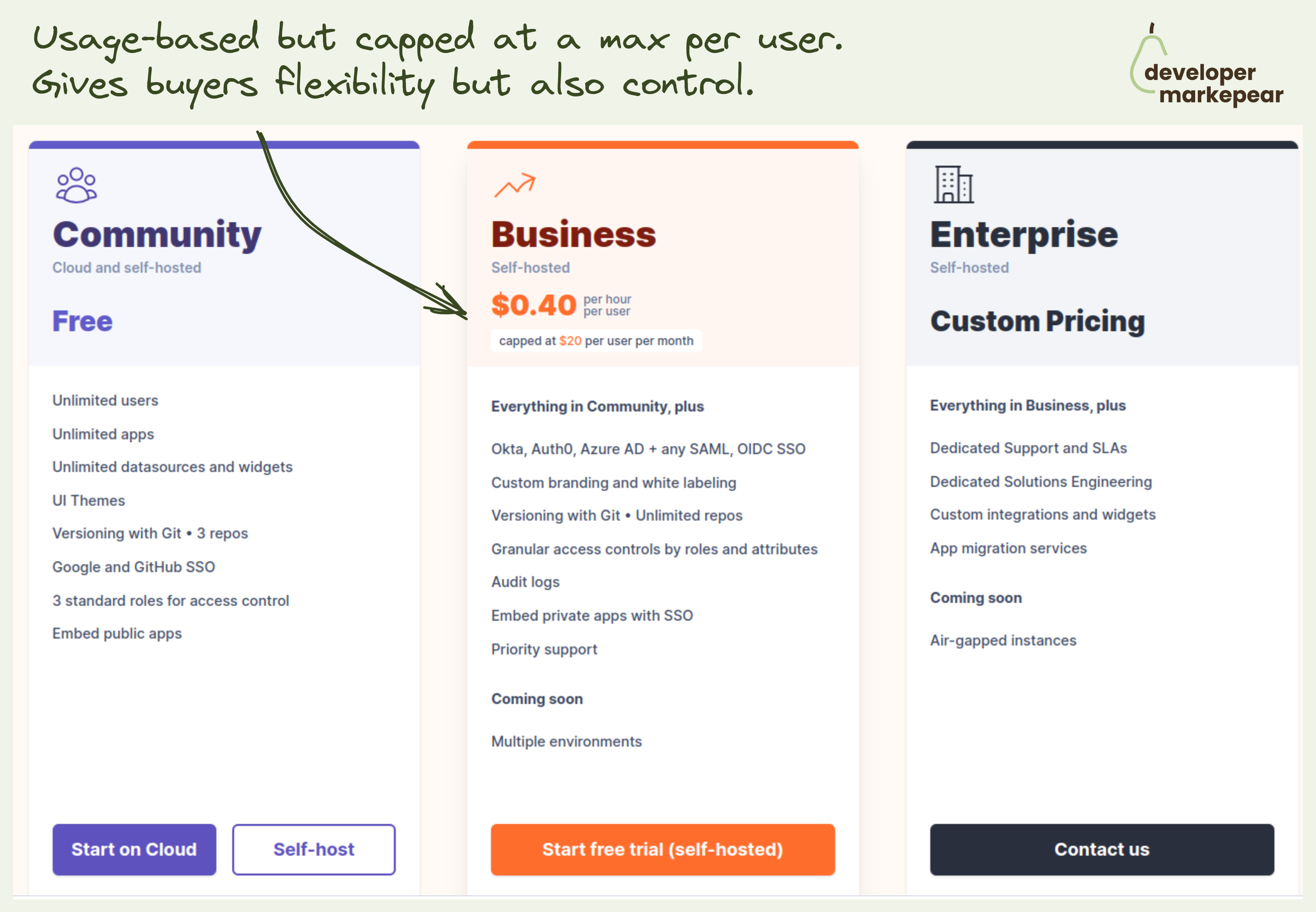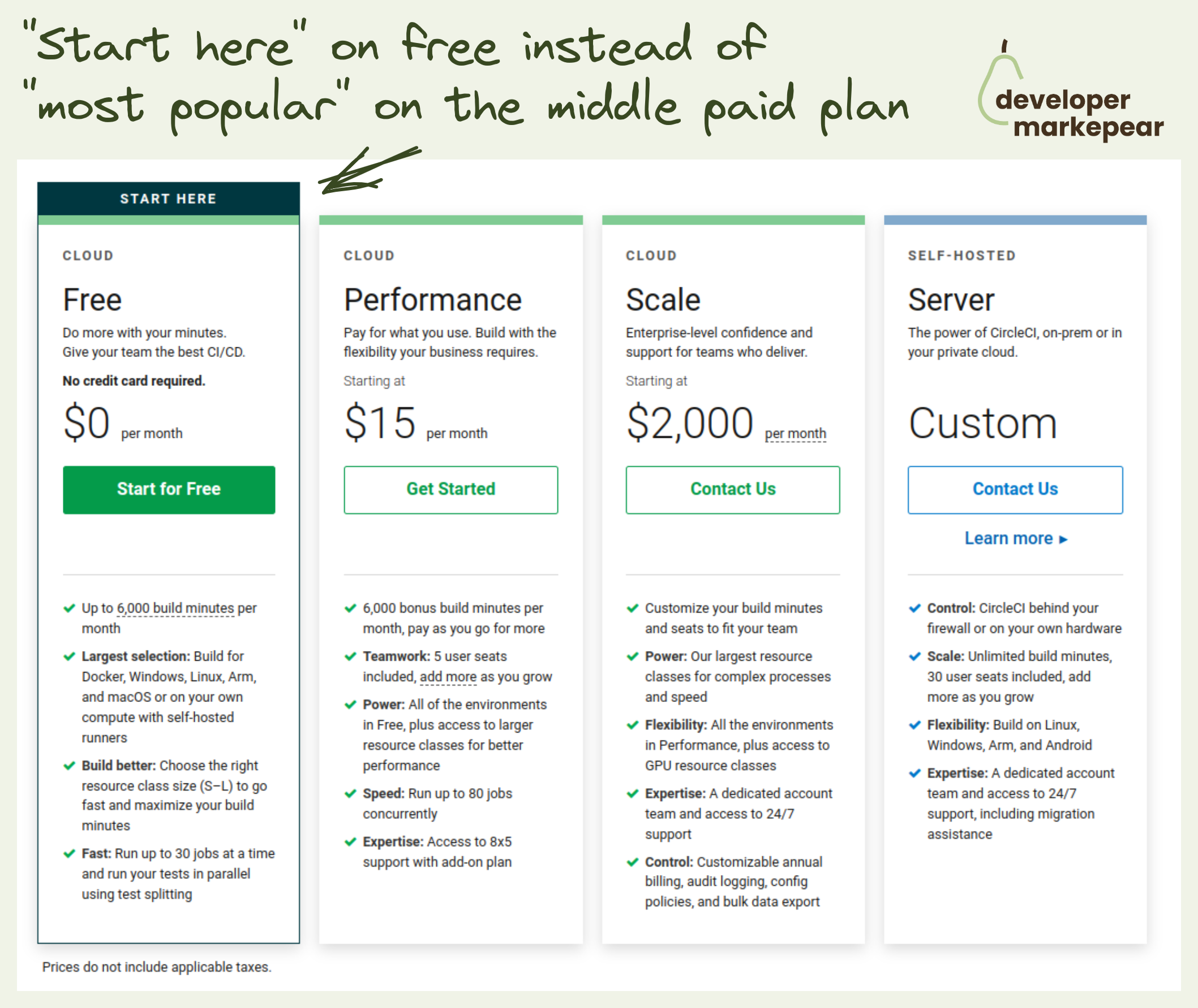
Pricing in your docs? That is how @Fly.io does it.
You click a pricing page link on their homepage and you go to the docs!
No 3 boxes with the "most popular" being the middle paid plan ;)
They just give it to you how it is. Exactly what you'd expect from the docs.
There are tables, explanations, and links to other docs pages.
Very bold decision imho. It definitely makes them feel super developer focused.
Plus if you do want a more standard, enterprise stuff you see:
"If you need more support or compliance options, you can choose one of our paid plans. These come with usage included and additional support options."
And that page looks like a classic pricing page.
But they focus on the developer buying experience here. Super interesting.

How do you make your dev tool pricing simple?
I really like this one.
Saw someone share a pricing page from Userfront some time ago and really liked it. They changed it now but I really like the thinking behind the older version.
It is just remarkably simple while hitting all the boxes:
Just a very good baseline.

When selling dev tools you typically have 3 "buyer" levels:
Individual dev:
Team lead:
Org lead:
How does Postman solve it?:
They even go the extra mile. Something I didn't see too often.
They understand their customer's reality and identified one more level between Org and Team.
Basically a department-level unit that probably has multiple teams but is not at the organization/enterprise level.
I really like what they did hear. Solid.

Sometimes your pricing is just complex. But you can still make it work.
If you want devs to convert, make it possible for them to estimate the cost.
@Mux does it nicely with a calculator:
What is crucial is that the calculator dimensions need to be understandable and familiar to the reader.:
The goal of this is to make it possible for a person to get an estimate right here right now.
Not have to setup a meeting with half the team to figure your pricing out.

Usage-based pricing is loved by devs. But has its own problems.
Ok, so first what are those problems?
Value metric:
Predictability and procurement:
But devs love usage-based pricing:
It is great for a dev tool company:
But pulling it off is not as easy as you may think.
Choosing that value metric, packaging it, and presenting it is a struggle.
@Appsmith solved it in the following way:
Very interesting approach.

Most dev tools have two deployment options:
And then companies present it on their pricing page with some flavor of two tabs.
And you need to name them somehow.
And how you describe those things sometimes adds confusion for your buyers:
I like how nice and simple solution Retool used on their pricing page:
Explicit, obvious and to the point.
Love it.

Sometimes your product just wins on price.
I like how New Relic owns it on this page:
After reading this I'd trust them to give me a solid price estimate and that it will likely be cheaper than Datadog.
Obviously price is not the only reason why we choose tools, but if that was a problem I had with Datadog, they have my attention.

How to communicate the flexible part of your plan?
Many dev tools have 3 plans:
Especially the ones doing some flavor of product-led-sales or open-source go-to-market.
Now, the Team plan is often a self-served version.
And for many dev tools, this part is partially or entirely usage-based.
So how do you present it?
You can just have "+ what you use" and explain it in the big table below.
But if you have just one usage dimension then why not do it here?
Resend does it beautifully communicating right away that it starts at 20$ / month and grows with the amount of emails you send.
Very clear. Very nice.

Why not highlight your free plan?
Most companies highlight their middle paid plan saying it is "most popular".
First thing, yeah, sure it is your most popular plan.
But more importantly, most visitors will not convert to your paid plans right away.
So why not try and capture as many devs as possible on the free plan?
If they like your dev tool there are many things you can do to convert some of them to paid plans.
But if they leave that pricing page and go with some other free tool, you are not converting anyone.
@CircleCI highlights free and they are in the mature, competitive market of CI CD tools.
Idk, it really does make a lot of sense to me.
If people need more advanced features they will choose higher plans anyway.
But if they want to get things started with the basic plans they will choose free or go elsewhere.
I'd rather have them choose free than none.